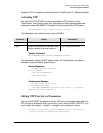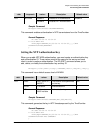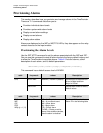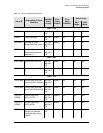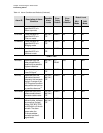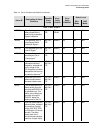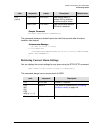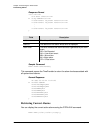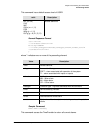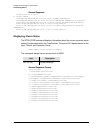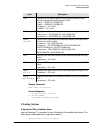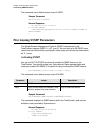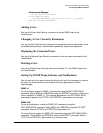
Chapter 4 Provisioning the TimeProvider
Provisioning Alarms
130 TimeProvider User’s Guide 097-58001-02 Revision G – April 2008
Sample Command
SET-ATTR::SYS:TS1000::ELEVTIME=ENABLE;
This command allows alarms to automatically escalate to the next higher alarm
level after the time period specified in the FLTDELAY keyword has elapsed (see
Provisioning System-Level Alarms, on page 130, for more details).
Sample Command
SET-ATTR::SYS:TS1000::EXPFAIL=NA;
This command disables the Expansion Fail alarm that occurs if you are not using an
Expansion Panel with the TimeProvider.
Provisioning System-Level Alarms
You use the ED-SYNC command to provision system-level alarms. The CLRDELAY
and FLTDELAY parameters are system-wide; the parameters cannot be set for
individual alarms.
ED-SYNC:[<tid>]:<aid>:[<ctag>]::<keyword>=<value>;
This command has a default access level of ADMIN.
Note:
1
When the fault is detected, the input is immediately removed from the possible reference
list. The fault must be continuously present for the period specified by FLTDELAY before
the alarm is set. After the alarm is set, it clears once the input signal is fault-free for the
period specified by CLRDELAY.
2
Once INPFREQ is set, the alarm clears when the input frequency is within the defined
pull-in range
<aid> <keyword> <value> Description Default value
SYS CLRDELAY 0 to 1000 s Sets the time delay to
declare a valid input after
an alarm condition clears
10 s
FLTDELAY 1 to 15 s Sets the time delay before a
fault is declared due to
LOS, AIS, or OOF alarms
on the input
5 s
FREEFLT
ON | SQUELCH
| AIS
Determines the action
when the LO enters the
Free-Run mode
SQUELCH
HOLDFLT
ON | SQUELCH
| AIS
Determines the action
when the LO enters the
Holdover mode
ON




